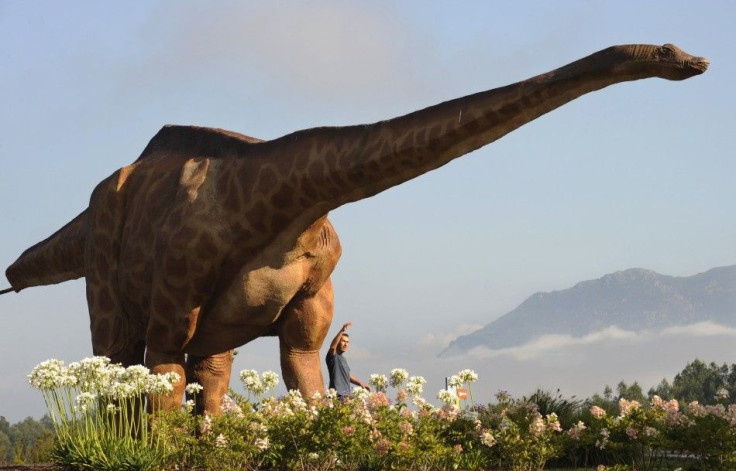Youngest Dinosaur Fossil Found in Montana: Giant Clue for Extinction Theory

A dinosaur fossil believed to be the youngest ever found was discovered by Yale scientists in Montana's Hell Creek formation, a study published in Biology Letters revealed.
The 45-centimetre horn is understood to be from a triceratops.
The discovery of the fossil provided unprecedented support for the theory that dinosaurs were wiped out by a massive meteor or similar cosmic body that struck the earth.
Subscribers to the competing theory - that dinosaurs gradually became extinct before the cosmic impact - have pointed to the absence of any non-avian dinosaur fossils buried within 10 feet of the K-T boundary, a geological signature in the earth's crust that represents the metor's presumed point of impact.
To all of our surprise the boundary was no more than 13 centimetres above this horn, and the significance is this indicates that at least some dinosaurs were doing quite well in this locale at the time of the meteor impact, Tyler Lyson, the study's lead author, told CTV.ca.
Avian dinosaurs are belived to have survived the cosmic event and evolved into modern-day birds.
The discovery does not entirely rule out the possibility that dinosaurs were already on their way to becoming extinct - fossil records indicate that dinosaurs were in decline prior to the cosmic event.
Having found one dinosaur in the gap doesn't necessarily falsify the idea that dinosaurs were gradually declining in numbers, Lyson told LiveScience. However, this find indicates that at least some dinosaurs were doing fine right up to the K-T boundary.
Although the researchers have been unable to determine the fossil's precise age, they are confident it is the youngest non-avian dinosaur fossil found thus far, and believe that it lived between tens of thousands of years to just a few thousand years before the impact.
The research team is continuing to search for more fossils in the area.
Must Read: Rare Dinosaur Fossil Found Complete in Alaska
© Copyright IBTimes 2024. All rights reserved.












